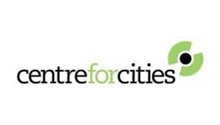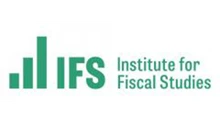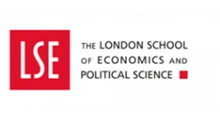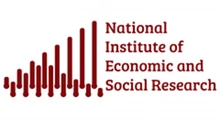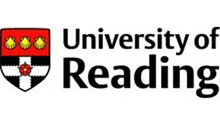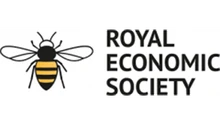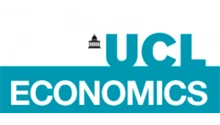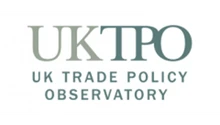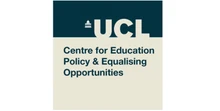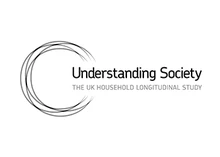UK inflation has risen sharply, with higher household utility bills driving the largest increase since October 2022. This month’s data release is also the first since higher minimum wages and national insurance contributions came into effect, putting pressure on employers’ labour costs.
The UK’s inflation rate has risen sharply. The consumer price index (CPI) rose to 3.5% for the year to April 2025 – 0.9 percentage points higher than in the previous month, the steepest increase since the peak of the post-pandemic inflationary wave (Office for National Statistics, ONS, 2025). A range of rising utility bills has pushed inflation past the Bank of England’s target range of 1-3% a year for the first time in eight months.
Figure 1: Annual inflation, UK and G7
Source: National statistics agencies, author’s calculations.
UK inflation is currently the second highest in the G7 (see Figure 1). It is behind Japan (3.6%), but ahead of the United States (2.3%), Germany (2.1%), Italy (1.9%), Canada (1.7%) and France (0.8%).
This surge in price growth was driven by regulated rises in household bills, which came into effect in April – the start of the new financial year. Altogether, this category contributed 0.8 percentage points to the overall rise in inflation (see Figure 2). On 1 April 2025, the prices of several services increased simultaneously, putting pressure on household budgets. Blaming higher wholesale gas prices, Ofgem, the UK energy regulator, increased the cap on energy bills by 6.4%. This raised the average annual cost for households from £1,738 to £1,849.
There was an even more dramatic increase for water, with the average annual household bill jumping by £123 to £603 – a 26% increase. Though variable by region, council tax increases also compounded the pressure, with nine in ten councils raising prices by 5% – the maximum increase that they are allowed to levy without a local referendum.
Figure 2: Contributions to the 0.9 percentage point rise in inflation, by sector
Source: ONS
Rising labour costs also explain some of the rise in inflation. April was the first month since higher minimum wages and national insurance contributions (NICs) came into effect. The national living wage increased on 1 April 2025, with the rate for workers aged 21 and over rising from £11.44 to £12.21 per hour – a proportionate increase that is more than twice the rate of inflation.
At the same time, the percentage of employees’ earnings to be paid by employers as NICs rose from 13.8% to 15%. In addition, the threshold at which businesses and other organisations start paying them was reduced from £9,100 to £5,000 per year. This means that employers now pay contributions on a larger portion of their employees’ earnings and at a higher rate.
The rising costs of labour are likely to be felt most acutely in the hospitality and retail sectors, which employ a disproportionate share of lower-paid workers. Indeed, food and non-alcoholic drink inflation shot up 0.4 percentage points in April. This was a sharp increase for a category that has already risen by more than overall inflation over the last three years (see Figure 3). It is perhaps a sign that retailers are passing on rising costs to consumers.
In contrast, annual inflation for clothing and for restaurants and hotels fell in April. These diverging trends suggest a mixed picture, although interpretation is complicated by a scheduling quirk: in 2025, price collection coincided with the Easter holidays, whereas in 2024 it did not. As a result, Easter sales were captured in only one year, limiting the reliability of year-on-year comparisons.
Figure 3: Food inflation over the past three years
Source: ONS
How will the Bank of England respond?
Despite upward pressure on prices, reactive interest rate hikes seem unlikely. To combat rapid post-pandemic inflation, the Bank of England increased the base rate 14 times. But a similar response to this latest rise is probably not required.
First, while the April figures represent a sharp rise in price growth, inflation remains far below its post-pandemic peak of 9.6% in October 2022.
Second, according to standard principles of monetary policy-making, central banks set their interest rate not in response to past inflation but to expected inflation. As April’s jump was primarily caused by one-off regulatory rises (including the increased energy price cap), it is not expected to transform into a persistent inflationary spiral. This means that the Bank of England – which anticipated this month’s jump – is unlikely to raise rates in response.
The Bank expects a ‘bumpy path’ in the near term, but for inflation then to fall back to 2%. Its May 2025 Monetary Policy Report projects CPI to peak at 3.7% by September, then to decline to 2.4% by the second quarter of next year, and to drop further to 1.9% the year after.
As such, the consensus among forecasters does not expect a further rise. Last month, the International Monetary Fund (IMF) forecast three more UK interest rate cuts this year, despite predicting that UK inflation would be the highest among advanced economies.
What about tariffs and trade?
Trade uncertainty could disrupt this path, pushing inflation in either direction.
A global economic slowdown resulting from trade uncertainty could lower inflation. Reduced expectations for global growth and lower investment might lead to delayed business expansion, hiring freezes, postponed wage increases and dampened consumer spending power.
At the same time, trade diversion resulting from US tariffs could also lower costs for UK consumers, as foreign firms that are blocked from American markets reduce their prices in order to find alternative buyers for their products.
On the other hand, if the UK were to implement reciprocal tariffs on US imports, prices could rise for British consumers. A limited US deal – reducing tariffs levied on British cars and eliminating tariffs on steel and aluminium, in return for increased access for American beef and ethanol – has calmed nerves.
But a sudden about-turn from the White House would not be without precedent. Since the start of the year, there have been frequent changes in direction on the US side, with President Trump imposing and then suspending tariffs on Canada and Mexico within a short period.
Where next for UK prices?
Although this month’s increase in inflation was largely anticipated and mainly driven by planned changes in regulated utility prices, it signals the start of a choppy period for price stability. Sharp rises in bills have put pressure on households; and rising labour costs have already begun to feed through to prices in some sectors.
Neither factor is likely to cause an inflationary spiral, but these combined pressures create a challenging economic environment. The coming months will reveal whether the Bank of England and other forecasters are correct – or whether more persistent inflation will force a rethink for monetary policy.
Where can I find out more?
Read more about the path of inflation and the impact of taxes and tariffs:
- The Bank of England’s May Monetary Policy Report sets out its forecasts for inflation and other key economic metrics.
- How were the US tariffs announced on ‘liberation day‘ determined? What do deficits tell us about where trade policy might go next? The Economics Observatory’s newsletter takes a close look at global trade.
- The Resolution Foundation’s Happy New Tax Year 2025 discusses the combined impact of tax threshold freezes and employer NICs on household incomes
Find out more about inflation from the Economics Observatory:
- What are the links between job vacancies, unemployment and inflation? Fergus Jimenez-England examines the links between the labour market and inflation, and the puzzle of why unemployment has remained historically low despite rising interest rates.
- What are the future prospects for UK inflation? In June 2024, Huw Dixon explored what falling inflation means for the future amid domestic and global risks.
- Can artificial intelligence help us to measure inflation? Economics Observatory research on how AI tools can improve the speed, cost and breadth of inflation measurement.




